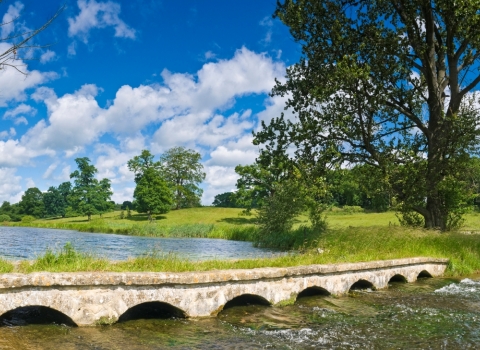The Cotswold Rivers Living Landscape Programme aims to reconnect and restore healthy river habitats throughout the Cotswolds. For this to succeed, it is essential for communities to value and get involved in protecting their local wildlife.
The programme aims to:
- Make sure that existing populations of water voles in the Cotswolds are strengthened and connected by improving and creating habitats, and controlling American mink. This also benefits other river wildlife, such as otters, kingfishers, dippers, fish, water shrews and plant life throughout the region.
- Advise farmers and landowners with agri-environment schemes.
- Work closely with local landowners to promote better river management, and connect wildlife habitats through natural ‘corridors’.
- Engage local communities and schools by providing volunteering and training opportunities.
- Promote awareness of our river wildlife heritage through shows, walks and events.
- Establish partnerships with other conservation organisations so that our work is as effective and as united as possible.
Target Habitats and Species
The Cotswold Rivers programme covers a variety of habitats and species.
Habitats:
River And Streams
Cotswold rivers and streams are generally of high water quality, supporting a diverse range of aquatic life.
Unimproved Limestone Grassland
Unimproved limestone grassland supports a very rich flora and associated invertebrates. This habitat is still found along the scarps of the Cotswold river valleys.
Unimproved Neutral Grassland
Unimproved neutral grassland occurs on the lower slopes with deeper soils and usually close to the rivers. This type of grassland is traditionally cut for hay.
Base-Rich Marsh
This habitat occurs where springs emerge and is noted for its rare flora communities.
Arable Land
Farming is the main land use, determining the wildlife character of more than 80% of the Cotswolds and arable cropping accounts for roughly half of this. The Cotswold limestone geology determines the species composition of the area, which contains priority farmland species of birds and arable weeds.
Species:
There are also the following species in the Cotswold Rivers area:
• water vole, otter, water shrew and bats
• kingfishers, dipper, barn owl, grey wagtail and farmland birds
• brown trout, bullhead, grayling, eel and brook lamprey
• white clawed crayfish, dragonflies and butterflies
• limestone grassland flora

Tom Marshall
Target Species: Water Vole
Water voles have disappeared from whole river systems across the county and the species now only survives in remnant key population areas, including the Cotswold Rivers.
The main reasons for the dramatic decline in our water voles are habitat loss, degradation and fragmentation, and predation by introduced American mink.
Agricultural intensification, unsympathetic river management, drainage of wetland marshes/ponds and building development have all contributed to the loss of the water vole’s wetland habitat.
Water voles are now so rare that the remaining populations are increasingly isolated and particularly vulnerable to further habitat loss, mink predation, flooding and excessive disturbance.





